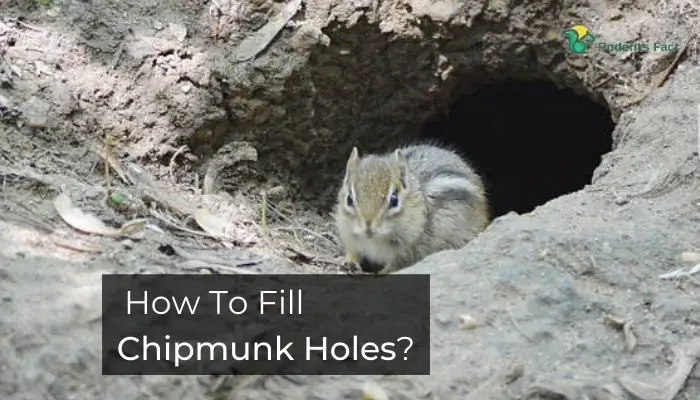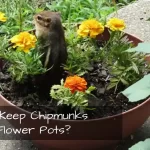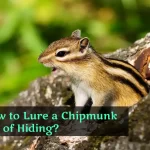How To Fill Chipmunk Holes? | Learn The Best & Efficient Methods
Chipmunks are cute but mysterious creatures that people do not see that often normally. But sometimes they can be irritating as they dig holes in the yard and can eat the fruits, and vegetables from your garden.
You may sometimes go hard to get out of them. Filling their holes could be an efficient way in this case. So, how to fill Chipmunk holes?

You can plug the chipmunk’s holes by pouring dirt with concrete on the ground, or seal the holes on walls, or chimneys by using chalk and concrete meshes.
Let’s describe how to identify the chipmunk’s holes, the depth of them, and how to plug up chipmunk holes properly. You will surely get relieved after thoroughly going through the post.
Identify The Holes Of Chipmunks
A normal chipmunk hole can be around 1 inch up to 3 inches long in the surface diameter. The places where they dig up the holes will mostly be around the yard, trees, gardens, and other open areas.
The most precise way to identify their holes is by looking inside the dug hole. You can use a flashlight to check them out. If the holes have a downwards slope, then it has to be a chipmunk-made burrow.
Also, if you see chipmunks frequently in a similar place, then the holes near that place will definitely be a chipmunk’s hole.

Furthermore, chipmunks do not make dirt when they create a new hole. They take all the specks of dirt on their cheek and throw them away. Thus, the hole keeps fresh. If you see a hole filled with dirt, then that hole is made by other animals like Moles or Gophers.
How Deep Are Chipmunk Holes
How deep are chipmunk holes? A chipmunk hole can be around 2 ft to 3 ft deep under the ground. The extension of the burrow can go around 20-30 ft in length.
Now, the tunnels can vary depending on various factors. Different chipmunks can create tunnels of different lengths. Again, if they are creating a hole around the roots, then the width can vary too.
Also, the extension of their holes occurs every year. So, they can be very deep the more time goes on.
How To Fill Chipmunk Holes Properly
As chipmunks could be destructive to our home, it is wise to repulse them anyhow. Plugging their holes could be an effective solution.
There are several ways to fill up a chipmunk hole. You can use any of these prevention measures and stop chipmunks from coming into your yard or garden easily.
Here are the methods of sealing up a chipmunk hole-
Plugging The Holes Totally
It can be difficult at the beginning to find a chipmunk hole as they dig the hole, collect the soil via their cheek, and throw them elsewhere.
- Look for small holes with a diameter of 1-3 inches near stones, piles of wood, or stumps.
- Take some dirt from somewhere else and pour them into that hole for a temporary fix. Chipmunks may dig through that dirt again.
- After pouring dirt inside that hole, place a couple of gravel so that they can not dig holes in the same place twice anymore.
- You can use concrete over the holes so that they can not pass through that hole anymore.
You can see the following video on how to fill the chipmunk’s holes.
Sealing Holes Created By Chipmunks Around Your House
Sometimes, chipmunks can create holes around your house walls or use chimneys to get inside your house. It can happen during winter as they want to have a place somewhere to crash in.
Read More: 5 Easy Steps On How To Make A Chipmunk Trap
Here are the steps of how to seal up chipmunk holes properly-
- Look for the cracked holes around 2 inches wide. As they are small rodents, they try to create holes around that size inside your wooden wall.
- After tressing some of the holes, use caulk or concrete to fill the holes properly.
- Cover the vents, chimneys, and pipes with steel meshes. When they try to get inside of the house using the holes and fail to do so, they will try to get inside through the open parts of your house.
If you can cover them using meshes, then they will be unable to get inside.

Wrapping Up
Chipmunk holes can be dangerous. When a chipmunk creates a hole, a snake can also use that hole too. So, you may fall into that trap too. But do not need to worry if you understood how to fill chipmunk holes and apply the same procedure. This is how you can prevent any type of danger too.




